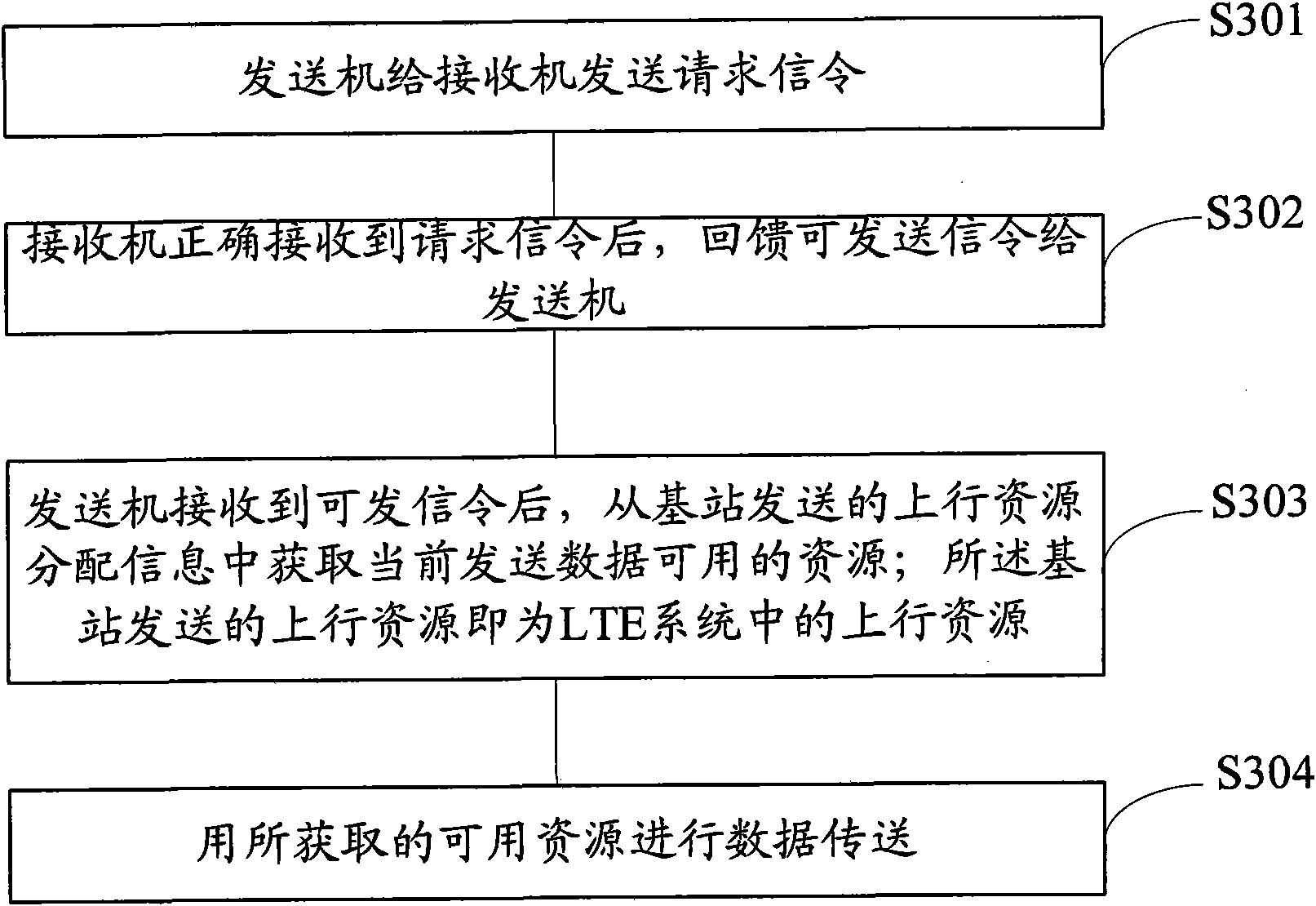Base station-assisted mobile terminal equipment autonomously accessing method and device
A technology for mobile terminals and base stations, applied in electrical components, wireless communications, etc., to solve problems such as inability to propose effective solutions, low spectral efficiency, and heavy signaling load
- Summary
- Abstract
- Description
- Claims
- Application Information
AI Technical Summary
Problems solved by technology
Method used
Image
Examples
Embodiment 1
[0059] Reference image 3 , Shows a flow chart of a base station-assisted mobile terminal device autonomous access method of the present invention, the method specifically includes:
[0060] S301: The transmitter sends request signaling to the receiver; the request signaling includes the ID of the transmitter and the ID of the receiver;
[0061] S302: After the receiver correctly receives the request signaling, the feedback can send the signaling to the transmitter;
[0062] Among them, the sending request signaling is abbreviated as RTS, and the sending signaling is abbreviated as CTS.
[0063] In a device-to-device communication (D2D) system, the transmitter and receiver perform a handshake process according to the principle of RTS / CTS time slot Aloha (SSARC). The handshake described here is also That is, the request signaling that the transmitter sends to the receiver includes the ID of the transmitter and the ID of the receiver. After the receiver correctly receives the request si...
Embodiment 2
[0089] Reference Image 6 , Shows a base station assisted mobile terminal device autonomous access device of the present invention, the device includes:
[0090] The request signaling sending module 601 is used for the transmitter to send request signaling to the receiver; the request signaling includes the ID of the transmitter and the ID of the receiver;
[0091] The signaling feedback module 602 can be used to send back signaling to the transmitter after the receiver correctly receives the request signaling;
[0092] The available resource obtaining module 603 is used for the transmitter to obtain the resources available for sending data from the uplink resource allocation information sent by the base station after receiving the signaling that can be sent; the uplink resources sent by the base station are the uplink resources in the LTE system ;
[0093] The data transmission module 604 is used for data transmission using the obtained available resources.
[0094] Preferably, the d...
PUM
 Login to View More
Login to View More Abstract
Description
Claims
Application Information
 Login to View More
Login to View More - R&D
- Intellectual Property
- Life Sciences
- Materials
- Tech Scout
- Unparalleled Data Quality
- Higher Quality Content
- 60% Fewer Hallucinations
Browse by: Latest US Patents, China's latest patents, Technical Efficacy Thesaurus, Application Domain, Technology Topic, Popular Technical Reports.
© 2025 PatSnap. All rights reserved.Legal|Privacy policy|Modern Slavery Act Transparency Statement|Sitemap|About US| Contact US: help@patsnap.com



